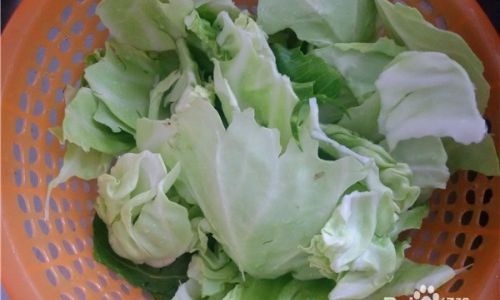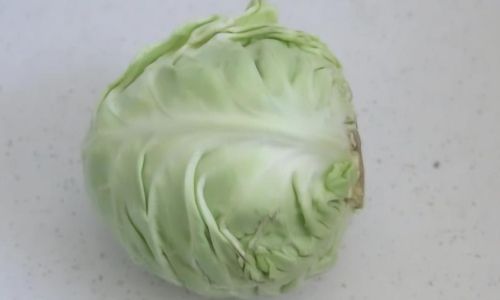Table of content
- Sautéing: Quick and Caramelized
- Roasting: Crispy Edges, Tender Centers
- Steaming: Gentle and Nutrient-Rich
- Fermenting: Tangy and Probiotic-Rich
- Stir-Frying: Asian-Inspired Flavors
- Braising: Meltingly Tender
- Cabbage Stir-Fry with Vegetables and Tofu
- Hearty Cabbage and Lentil Soup
- Stuffed Cabbage Rolls (Galumpki)
- Creamy Coleslaw with Apples
- Roasted Cabbage Steaks with Parmesan
Cabbage, a humble yet versatile vegetable, has been a staple in kitchens worldwide for centuries. Often underestimated, this cruciferous gem boasts a mild, slightly sweet flavor that lends itself to countless preparations, from crisp salads to comforting stews. Yet, many home cooks struggle to elevate cabbage beyond its basic boiled or raw forms, missing out on its potential to shine as a star ingredient. This article delves into the secrets of transforming cabbage into a culinary masterpiece, exploring cooking techniques, flavor pairings, and innovative recipes that highlight its unique texture and taste.
Understanding Cabbage: Types and Selection
Before diving into cooking methods, it’s essential to grasp the variety of cabbages available. Each type offers distinct flavors and textures, making them suitable for different dishes:
- Green Cabbage: The most common variety, with dense, pale green leaves and a crisp texture. Ideal for coleslaw, stir-fries, and soups.
- Red Cabbage: Vibrant purple leaves with a peppery kick. Perfect for salads, pickling, or adding color to dishes.
- Napa Cabbage: Oblong-shaped with frilly, pale green leaves. Its delicate sweetness works well in Asian-inspired dishes like kimchi or dumplings.
- Savoy Cabbage: Crinkled, dark green leaves with a tender texture. Excellent for braising or stuffing.
- Bok Choy: A Chinese cabbage with thick white stems and tender green leaves. Often used in stir-fries or soups.
When selecting cabbage, choose heads that feel heavy for their size, with firm, unblemished leaves. Avoid specimens with wilted outer layers or a sulfurous odor, which indicates age or spoilage.

Preparation Techniques: Maximizing Flavor and Texture
Proper preparation is key to unlocking cabbage’s full potential. Follow these steps for optimal results:
- Cleaning: Rinse cabbage under cold water, gently rubbing the leaves to remove dirt. For tightly packed heads, soak in a vinegar-water bath (1 part vinegar to 3 parts water) for 10 minutes to eliminate pests or residue.
- Cutting: Use a sharp knife to slice cabbage into wedges, shreds, or ribbons. For salads, thinly slice leaves crosswise. For roasting or grilling, cut into thick wedges or steaks.
- Salting (Optional): For recipes like coleslaw or sauerkraut, toss shredded cabbage with salt and let it sit for 30 minutes. This draws out excess moisture, softens the leaves, and enhances crispness.
Cooking Methods: From Quick Sautés to Slow Braises
Cabbage’s adaptability shines through diverse cooking techniques. Experiment with these methods to discover your favorite:
Sautéing: Quick and Caramelized
Sautéing cabbage in a hot pan with fat (butter, olive oil, or bacon fat) caramelizes its natural sugars, creating a sweet, nutty flavor.
Technique:
- Heat a large skillet over medium-high heat. Add fat and let it shimmer.
- Add thinly sliced cabbage, stirring occasionally. For depth, add minced garlic, onions, or spices like caraway seeds.
- Cook until tender and golden-brown (8–10 minutes). Finish with a splash of vinegar or soy sauce for acidity.
Pro Tip: Overcrowding the pan will steam the cabbage instead of sautéing it. Cook in batches if needed.
Roasting: Crispy Edges, Tender Centers
Roasting cabbage transforms it into a caramelized, slightly charred delight. This method works best with wedges or steaks.
Technique:

- Preheat oven to 425°F (220°C). Toss cabbage wedges in olive oil, salt, pepper, and herbs (thyme, rosemary, or smoked paprika).
- Roast on a baking sheet for 25–30 minutes, flipping halfway. The edges should be crispy and golden.
Pro Tip: For extra crunch, sprinkle with grated Parmesan or breadcrumbs during the last 5 minutes.
Steaming: Gentle and Nutrient-Rich
Steaming preserves cabbage’s crisp texture and nutrients, making it ideal for salads or light sides.
Technique:
- Place cabbage wedges or shreds in a steamer basket over boiling water. Cover and steam for 5–7 minutes until tender-crisp.
- Toss with lemon juice, olive oil, and fresh herbs.
Pro Tip: Avoid oversteaming, which turns cabbage mushy and releases sulfurous odors.
Fermenting: Tangy and Probiotic-Rich
Fermented cabbage, such as sauerkraut or kimchi, offers a tangy, gut-healthy addition to meals.
Technique (Sauerkraut):
- Thinly slice cabbage and toss with salt. Massage until juices release.
- Pack into a jar, submerging cabbage in brine. Cover with a weight and ferment at room temperature for 1–4 weeks.
Pro Tip: Use filtered water and avoid metal utensils to prevent spoilage.

Stir-Frying: Asian-Inspired Flavors
Stir-frying cabbage with aromatic ingredients like ginger, garlic, and soy sauce creates a vibrant, quick dish.
Technique:
- Heat a wok over high heat. Add oil, then garlic and ginger. Toss in shredded cabbage and stir-fry for 3–4 minutes.
- Add soy sauce, rice vinegar, and a pinch of sugar. Serve with sesame seeds.
Pro Tip: Cut cabbage into uniform pieces for even cooking.
Braising: Meltingly Tender
Braising cabbage in broth or wine results in a silky, flavorful side dish.
Technique:
- Sauté onions and garlic in a pot. Add cabbage wedges and broth (vegetable or chicken).
- Simmer covered for 20–25 minutes until tender. Finish with a pat of butter and fresh herbs.
Pro Tip: Add apples or bacon for sweetness and smokiness.
Recipes to Elevate Cabbage
Cabbage Stir-Fry with Vegetables and Tofu
Ingredients:

- 1 small green cabbage, shredded
- 1 block firm tofu, cubed
- 1 red bell pepper, sliced
- 1 carrot, julienned
- 3 garlic cloves, minced
- 2 tbsp soy sauce
- 1 tbsp sesame oil
- 1 tbsp rice vinegar
- 1 tsp chili flakes (optional)
- 2 tbsp vegetable oil
Instructions:
- Press tofu between paper towels to remove moisture. Fry in 1 tbsp oil until golden; set aside.
- Heat remaining oil in a wok. Stir-fry garlic and chili flakes for 30 seconds.
- Add cabbage, bell pepper, and carrot. Stir-fry for 4 minutes.
- Toss in tofu, soy sauce, vinegar, and sesame oil. Cook 2 more minutes. Serve over rice.
Hearty Cabbage and Lentil Soup
Ingredients:
- 1 tbsp olive oil
- 1 onion, diced
- 2 carrots, chopped
- 2 celery stalks, chopped
- 4 garlic cloves, minced
- 1 small green cabbage, shredded
- 1 cup dried lentils, rinsed
- 6 cups vegetable broth
- 1 can diced tomatoes
- 1 tsp smoked paprika
- Salt and pepper to taste
Instructions:
- Sauté onion, carrots, and celery in oil until softened. Add garlic and paprika; cook 1 minute.
- Stir in cabbage, lentils, broth, and tomatoes. Bring to a boil, then simmer 25–30 minutes.
- Season with salt and pepper. Serve with crusty bread.
Stuffed Cabbage Rolls (Galumpki)
Ingredients:
- 12 large cabbage leaves
- 1 lb ground beef or lamb
- 1 cup cooked rice
- 1 onion, diced
- 2 garlic cloves, minced
- 1 can tomato sauce
- 1 tbsp paprika
- 1 tsp cinnamon
- Salt and pepper
Instructions:
- Blanch cabbage leaves in boiling water for 2 minutes; pat dry.
- Sauté onion and garlic until golden. Mix with meat, rice, paprika, cinnamon, salt, and pepper.
- Place 2 tbsp filling in each leaf; roll tightly. Arrange in a baking dish.
- Pour tomato sauce over rolls. Cover and bake at 350°F (175°C) for 1 hour.
Creamy Coleslaw with Apples
Ingredients:
- ½ head green cabbage, shredded
- 1 carrot, grated
- 1 apple, julienned
- ½ cup mayonnaise
- 2 tbsp apple cider vinegar
- 1 tbsp honey
- 1 tsp celery seeds
- Salt and pepper
Instructions:

- Toss cabbage, carrot, and apple in a bowl.
- Whisk mayonnaise, vinegar, honey, celery seeds, salt, and pepper.
- Toss dressing with cabbage mixture. Chill 1 hour before serving.
Roasted Cabbage Steaks with Parmesan
Ingredients:
- 1 large green cabbage
- 3 tbsp olive oil
- 1 tsp garlic powder
- 1 tsp paprika
- ½ cup grated Parmesan
- Fresh parsley for garnish
Instructions:
- Preheat oven to 400°F (200°C). Cut cabbage into 1-inch thick steaks.
- Brush both sides with oil; season with garlic powder, paprika, salt, and pepper.
- Roast 20 minutes. Flip, sprinkle with Parmesan, and roast 15 more minutes until golden.
- Garnish with parsley.
Pairing Cabbage with Complementary Ingredients
Cabbage’s mild flavor pairs beautifully with bold ingredients. Experiment with:
- Proteins: Bacon, sausage, tofu, or tempeh.
- Aromatics: Garlic, ginger, onions, or leeks.
- Herbs and Spices: Dill, caraway, thyme, or smoked paprika.
- Acids: Lemon juice, vinegar, or pickled vegetables.
- Sweeteners: Honey, maple syrup, or apples.
Common Mistakes to Avoid
- Overcooking: Cabbage turns mushy and releases sulfur compounds, causing bitterness.
- Under-seasoning: Cabbage needs ample salt, fat, or acid to shine.
- Uneven Cutting: Inconsistent sizes lead to uneven cooking.
- Skipping Salting (for coleslaw): Salting softens cabbage and prevents watery slaw.
Pro Tips for Cabbage Mastery
- Enhance Sweetness: Roast or sauté cabbage to caramelize natural sugars.
- Balance Bitterness: Add acidity (lemon, vinegar) or sweetness (honey, apples).
- Preserve Crispness: Use in salads or slaws shortly after dressing.
- Waste Not: Save cabbage cores for broths or pickling.
Conclusion
Cabbage’s humility belies its culinary potential. By mastering techniques like roasting, fermenting, and sautéing, and pairing it with complementary flavors, you can turn this unassuming vegetable into a dish that steals the spotlight. Whether you prefer the smoky char of roasted cabbage steaks or the tangy crunch of homemade sauerkraut, experimentation is key. So next time you bring home a head of cabbage, let your creativity roam—you might just discover your new favorite meal.






0 comments